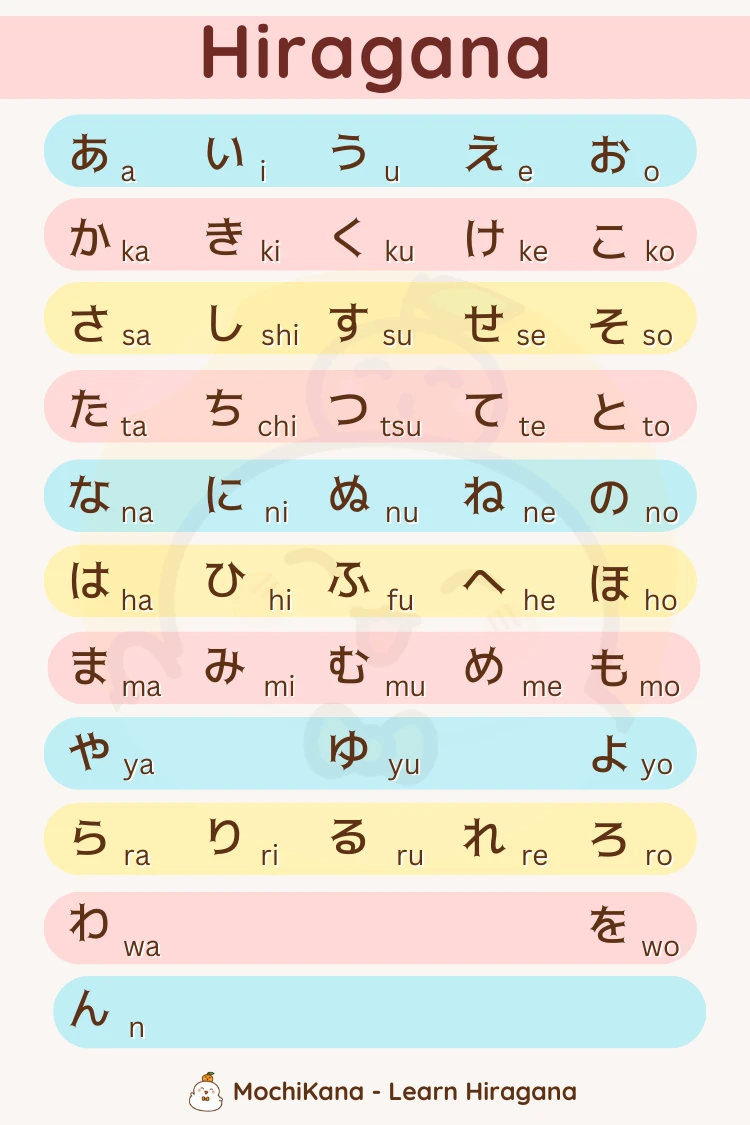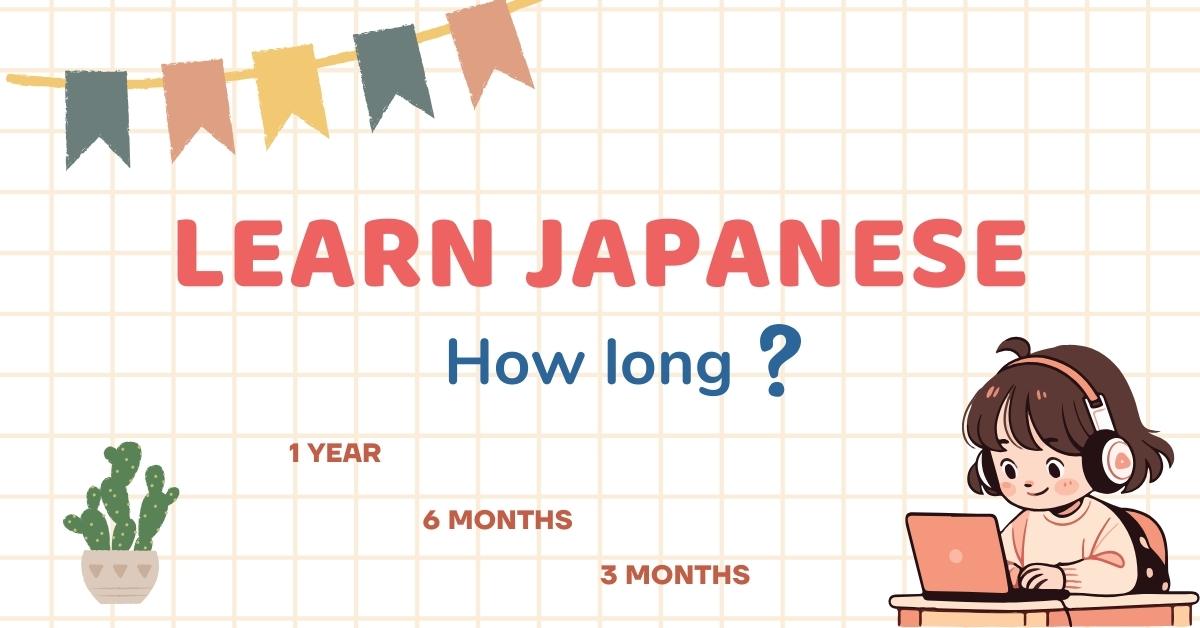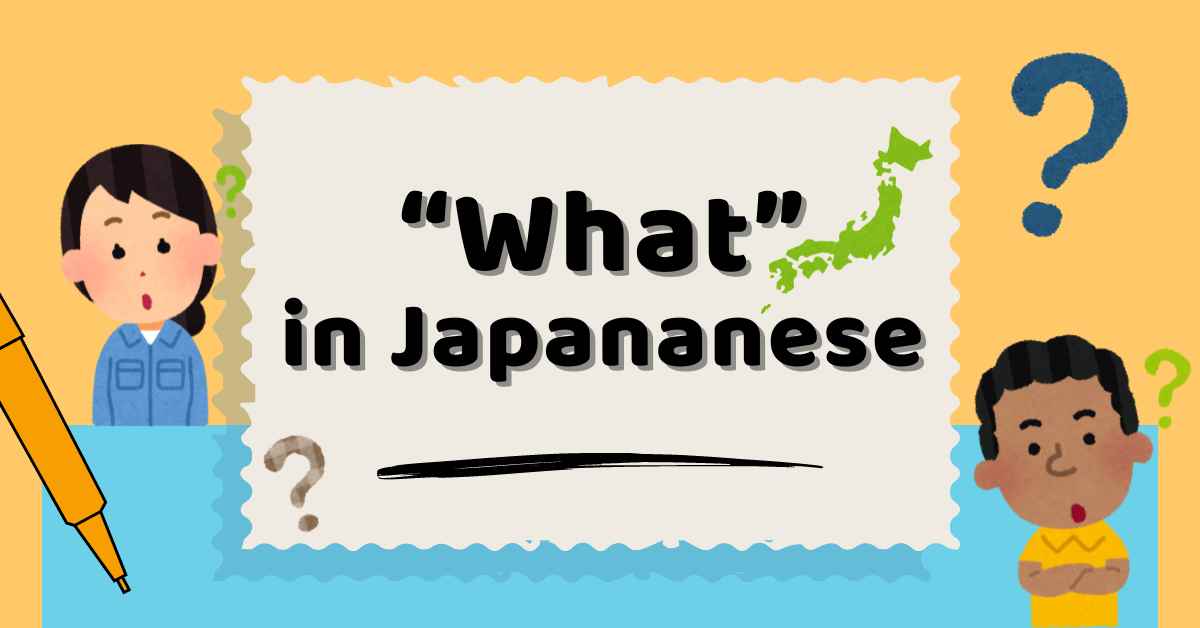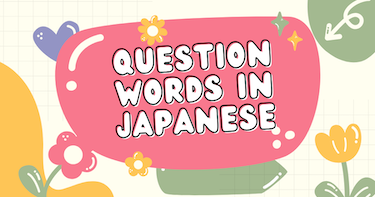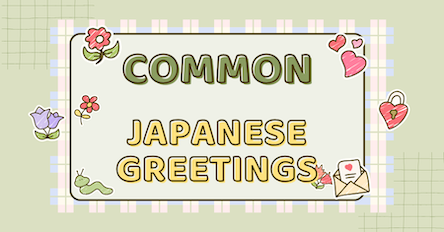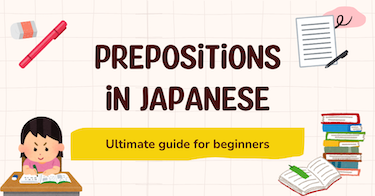Learning Japanese involves not just understanding the vocabulary and grammar, but also mastering the pronunciation, which is fundamental to being understood and engaging in meaningful communication. This guide will take you through the basics of Japanese sounds and writing, focus on the vowels and consonants, and provide insight into the subtleties of Japanese pronunciation including exceptions and the distinction between long and short sounds.
- Japanese Sounds and Writing
- Japanese Vowels
- Hiragana and Basic Sounds
- How to Pronounce Japanese
- Exceptions in Japanese Pronunciation

Japanese Sounds and Writing
The Japanese language consists of relatively few sounds, making its pronunciation accessible for learners. The script is syllabic, meaning that (with a few exceptions) each character in the writing system corresponds to a particular sound or a combination of sounds. Japanese uses three types of scripts:
1. Hiragana: The basic phonetic script used for native Japanese words
Hiragana is often the first script learned by students of the Japanese language. It is a phonetic alphabet consisting of 46 characters, each representing a specific sound. Unlike the Latin alphabet used in English, each Hiragana character stands for a whole syllable except for the lone nasal sound ‘n’.
Hiragana’s primary role is to provide grammatical support to Kanji. It is used to conjugate verbs, express grammatical particles, and write native Japanese words that either do not have a corresponding Kanji or whose Kanji is not commonly used. Due to its comprehensive coverage of sounds, Hiragana is also employed in children’s literature and other educational materials.
Its cursive, flowing style is visually distinct from the more angular Katakana and complex Kanji, making it relatively straightforward to write and recognize. Learning Hiragana is crucial as it lays the phonetic foundation for mastering the other scripts.
Learning to pronounce Japanese Hiragana is made easy with MochiKana. The app provides interactive flashcards with audio, helping you master correct pronunciation step by step. Perfect for beginners aiming to build a strong foundation in Japanese.
2. Katakana: Used primarily for foreign words and names, as well as for emphasis.
Katakana, similar to Hiragana in function, is a phonetic script comprising 46 characters that mirror Hiragana’s sounds but differ in form. This script is primarily used for words borrowed from other languages, known as loanwords, which have been adapted into the Japanese lexicon. For example, コーヒー (kōhī) for “coffee” and インターネット (intānetto) for “internet” are written in Katakana.
Moreover, Katakana serves to transcribe foreign personal names, company names, and onomatopoeia. It is also frequently used for stylistic purposes, such as in advertising, to give text a modern or technological feel. When used in a text predominantly written in Hiragana or Kanji, Katakana draws attention and provides emphasis, akin to italics or bold type in English.
3. Kanji: Characters borrowed from Chinese, representing words or concepts.
Kanji are logographic characters borrowed from Chinese, and they represent words or concepts rather than sounds alone. The use of Kanji in Japanese writing is a testament to the historical and cultural ties between Japan and China. Each Kanji has one or several readings, which can be broadly categorized into On’yomi (Chinese reading) and Kun’yomi (Japanese reading).
Kanji is used to write nouns, stems of verbs and adjectives, and most adverbs, conveying not just semantic meaning but also aesthetic beauty. Learning Kanji is considered challenging due to the need to memorize thousands of characters along with their multiple readings and meanings. However, mastery of even a basic set of Kanji significantly boosts reading efficiency and understanding of complex texts.
For functional literacy in Japanese, a knowledge of about 2,000 standard Kanji, known as the Joyo Kanji, is essential. They are employed in a variety of contexts, from official documents to everyday literature, providing a depth of meaning and connection to the historical layers of the language.
Each of these scripts plays a unique role in Japanese writing, but Hiragana and Katakana are most relevant to learning pronunciation as they directly represent the sounds of Japanese.
Japanese Vowels
Japanese vowels are the cornerstone of pronunciation and are relatively straightforward compared to English. There are five vowels: A, I, U, E, O. They are pronounced as follows:
- A – pronounced as ‘ah’, similar to ‘father’.
- I – pronounced as ‘ee’, similar to ‘see’.
- U – pronounced as ‘oo’, similar to ‘food’ but with less rounding of the lips.
- E – pronounced as ‘eh’, similar to ‘met’.
- O – pronounced as ‘oh’, similar to ‘open’.
These vowels can appear short or long (discussed later), and their clarity in pronunciation is crucial in distinguishing different words.
Hiragana and Basic Sounds (Hiragana Chart)
Hiragana is a phonetic alphabet, each character representing a vowel or a consonant-vowel combination. Here’s a basic Hiragana chart with pronunciation:
| A | I | U | E | O | |
| – | あ (a) | い (i) | う (u) | え (e) | お (o) |
| K | か (ka) | き (ki) | く (ku) | け (ke) | こ (ko) |
| S | さ (sa) | し (shi) | す (su) | せ (se) | そ (so) |
| T | た (ta) | ち (chi) | つ (tsu) | て (te) | と (to) |
| N | な (na) | に (ni) | ぬ (nu) | ね (ne) | の (no) |
| H | は (ha) | ひ (hi) | ふ (fu) | へ (he) | ほ (ho) |
| M | ま (ma) | み (mi) | む (mu) | め (me) | も (mo) |
| Y | や (ya) | ゆ (yu) | よ (yo) | ||
| R | ら (ra) | り (ri) | る (ru) | れ (re) | ろ (ro) |
| W | わ (wa) | を (wo) | |||
| ん (n) |
How to Pronounce Japanese
Pronouncing Japanese accurately requires attention to the length of sounds and the rhythm of speech. Japanese is a mora-timed language, which means each sound, or mora, takes up roughly the same amount of time. This is different from English, which is stress-timed.
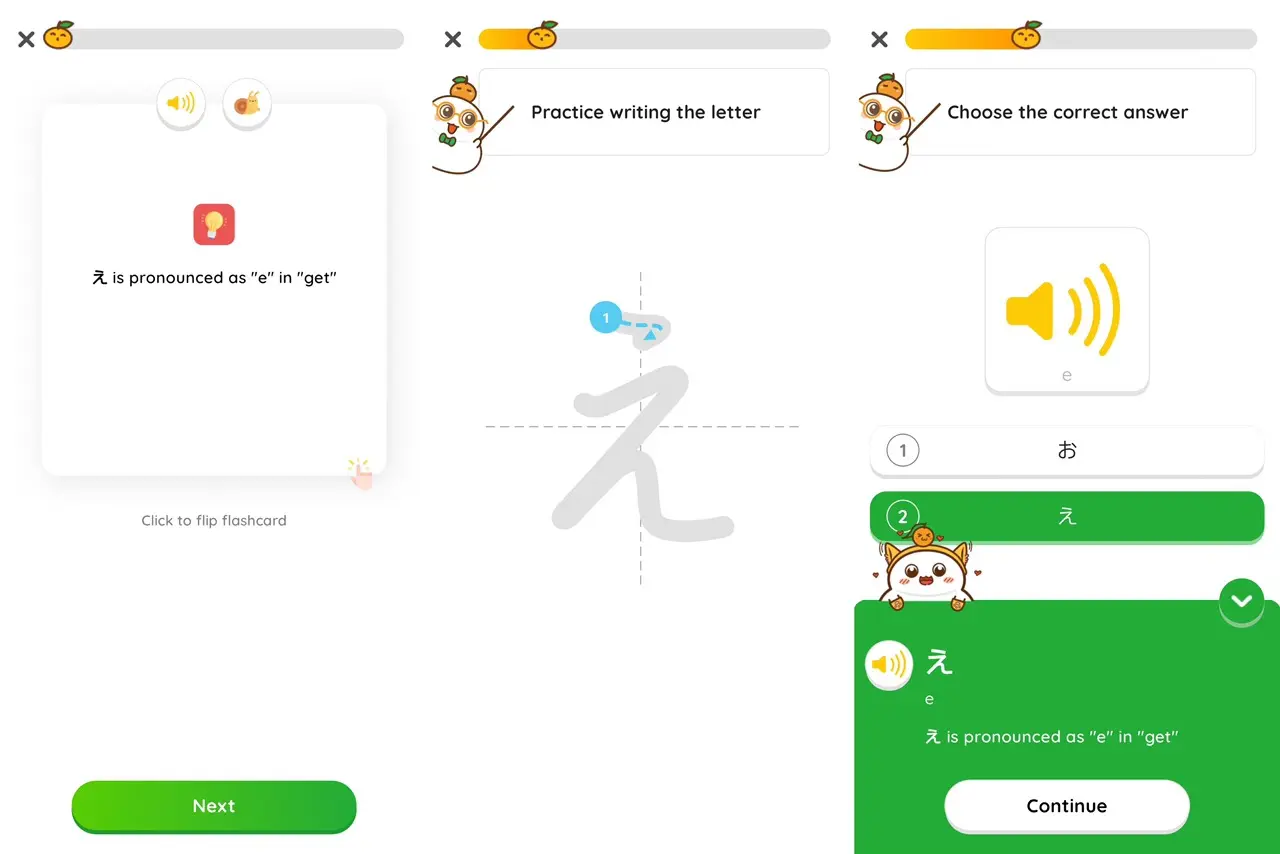
With MochiKana, mastering the pronunciation of both Hiragana and Katakana becomes effortless. The app’s interactive flashcards come with clear audio, guiding you through each character’s correct sound. Whether you’re starting with Hiragana or advancing to Katakana, MochiKana’s step-by-step lessons ensure you build a solid foundation.
Exceptions in Japanese Pronunciation
While Japanese pronunciation is largely phonetic, there are exceptions:
- The ‘R’ Sound: The Japanese ‘r’ is not quite an English ‘r’ or ‘l’ but somewhere in between. It’s similar to the Spanish ‘r’, pronounced with a single tap of the tongue against the palate.
- The ‘Fu’ Sound: The sound represented by ふ (fu) is not a true ‘fu’ as in English. It’s produced with less rounding of the lips and sounds almost like ‘hu’.

